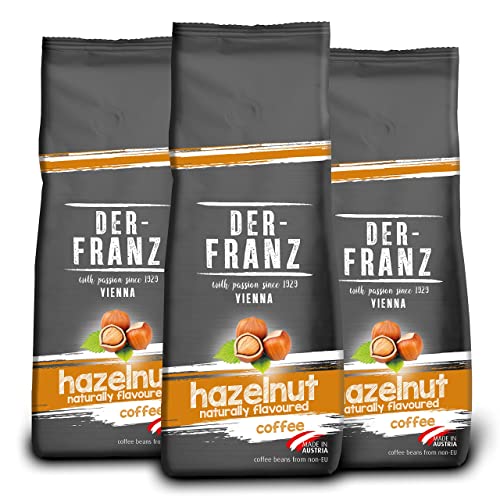Which Coffee Beans Are The Best Isn't As Difficult As You Think

Which Coffee Beans Are the Best?
The beans you select will make all the difference when it comes to creating a delicious cup. Each type offers a unique flavor that complements a wide variety of beverages and recipes.
Panama is the leader in the field with their exclusive Geisha beans that score highly in cupping tests and are priced high at auction. However, Ethiopia and Yirgacheffe beans, particularly is in close proximity.
1. Geisha Beans from Panama

If you're looking for the top coffee beans around the globe look no further than Geisha beans from Panama. Geisha beans are prized due to their unique aroma and flavor. These rare beans, which are harvested at high altitudes undergo an unusual process which gives them their unique flavor. The result is a cup that is smooth, rich, and full of flavor.
Geisha coffee is native to Ethiopia but was introduced to Panama for the first time in 1963. Geisha coffee has been proven for winning competitions thanks to its prestigious taste and flavor. Geisha beans are also expensive due to the labor required to grow them. The Geisha coffee plant is more difficult to grow than other coffee plants, because it requires higher elevations and unique climate conditions.
Geisha beans should be handled with care, as they are delicate. They should be sorted with care and carefully prepared for roasting. They may turn acidic or bitter if they are not cooked properly.
The beans are grown at the Janson Coffee Farm, which is located in Volcan, Panama. The farm is dedicated to improving the environment and is a specialist in producing high-quality coffee. They utilize solar panels to provide energy, recycle water and waste material, and employ enzyme microbes to improve soil. They also reforest the area and make use of recycled water to wash. The coffee they produce is a Washed Geisha and was awarded the highest score in a Panama Coffee Competition.
2. Ethiopian Coffee
Ethiopia is a giant in the field of coffee with a rich history of producing the best coffees around the globe. They rank as the 5th largest coffee producer in the world, and their beans are highly prized because of their unique fresh and fruity flavors. Ethiopians, unlike many other beans, are best roasting to medium-low. This lets the floral notes be preserved while highlighting the citrus and fruity flavors.
While Sidamo beans are known for their crisp acidity and citric acidity. Coffees from other regions like Yirgacheffe and Harar are also thought to be some of the best around. Harar is among the most famous and oldest varieties of Ethiopian coffee and has distinct mocha and wine flavor profile. Coffees from the Guji zone are also recognized for their distinct terroirs and complex flavors.
Another type of coffee that comes from Ethiopia is known as natural process, and it is processed dry instead of wet-processing. The difference between the two methods is that wet-processing involves washing the coffee beans, which can remove some sweetness and fruity flavor from the beans. Natural Ethiopian coffees that were processed weren't as well-known as the washed counterparts. They were more often used to enhance blends than they were offered on the market for specialty coffees. Recent technological advancements have led to higher quality natural Ethiopians.
3. Brazilian Coffee
Brazilian Coffee is a rich mixture of different varieties. It is known to have a low acidity. It is sweet with hints of chocolate. The flavor is different based on where and in which state it is grown. It is also known for its citrus and nut notes. It is good for those who prefer medium-bodied coffee.
Brazil is the biggest producer and exporter of coffee in the world. The country produces more than 30% of the world's coffee beans. Brazil's economy is heavily reliant from this vast agricultural industry. The climate is ideal for growing coffee in Brazil, and there are fourteen major coffee-producing regions.
The principal beans that are used in Brazilian coffee are Catuai, Mundo Novo, Obata and Icatu. These are all varieties of Arabica coffee. There are also a lot of hybrids that contain Robusta. Robusta is a kind of coffee bean that is found in Sub-Saharan Africa. It is not as flavorful as Arabica coffee, however, it is more easy to grow and harvest.
coffee bean shop near me is important to remember that slavery continues to exist in the coffee industry. Slaves in Brazil are often subjected long and exhausting working hours and often do not have adequate housing. The government has taken steps to address this issue and has established programs to assist coffee farmers pay their debts.
4. Indonesian Coffee
The finest Indonesian coffee beans are well-known for their earthy, dark taste. The volcanic ash that is mixed into the soil gives them a firm body and a low acidity which make them great for blending with high-acid coffees from Central America and East Africa. They also react well to darker roasting. Indonesian coffees are rustic and rich in flavor with notes of wood, leather, tobacco and ripe fruit.
Java and Sumatra are the two biggest coffee-producing regions in Indonesia, however some coffee is also produced on Sulawesi and Bali. A majority of farms in this region use a wet-hulling procedure. This is different from the washed processing process which is typical in most of the world, where the cherries of coffee are removed and washed before drying. The hulling reduces the amount water present in the coffee that can minimize the effect of rain on the final product.
Mandheling is one of the most well-known and premium varieties of Indonesia. It is a native of Toraja. It is a rich and full-bodied coffee with hints of candied fruits and a strong chocolate flavor. Gayo and Lintong are also types of coffee that are sourced from this region. These are generally wet-hulled with a full and smoky taste.
